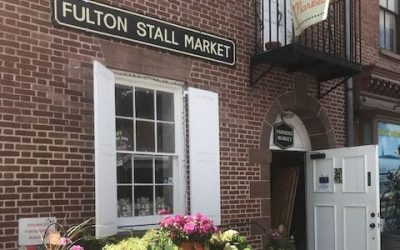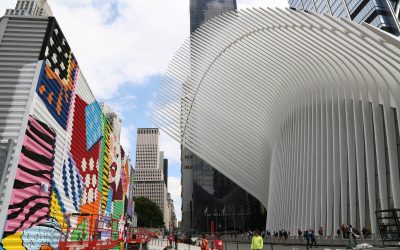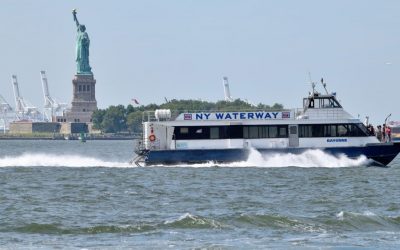This feature originally appeared in Summer 2011 issue of Downtown Magazine.
In the early 1600s, with the opening up of the New World, the international chess game for goods and settlements got underway with a fervor that galvanized both Europe and the Americas.
The Spanish were establishing themselves in South and Central America, the French had a small settlement in Quebec, the English were in Virginia and Massachusetts and the Dutch had carved out a vast empire of mostly trackless forest extending from Delaware to Connecticut and up the Hudson (then called the Noort Rivier, or North River)—with the crown jewel being the settlement at New Amsterdam.
From the modest beginnings in 1625, when less than 300 souls resided at the far southern tip of Manhattan island, the newly formed West India Company launched a search for valuable beaver pelts by trading with the Native Americans. The fairly civil relations with the local inhabitants didn’t take long to sour, however, and lack of understanding on both sides produced a series of military actions and massacres that set the template for the conquest of the continent.
 Getting Settled
Getting Settled
The first Dutch explorers looked at Manhattan harbor very carefully and determined that the southern tip could be best fortified while still providing an ice-free and deep harbor. The earliest maps and plans show a diminutive but growing little village, dominated by a large star-shaped fort on the site of the current Custom House and about ten streets crisscrossing around the fort.
They were protected to landward by the famous wall, which was a palisade of logs that ran across the island along the line of our current Wall Street. There is evidence that a windmill and sawmill were early arrivals. This made good sense for anyone who has stood in the powerful gusts that come off the Hudson, and the fact that a great deal of wood was needed to be processed to construct not only houses and fortifications, but also to build new ships and repair the vessels arriving in the harbor from Europe.
The initial slaves to shore were eleven black men who came with the first waves of settlers, establishing a precedent that would not be sorted out until two hundred and forty years later. There was also a curious mix of settlers, not just Dutch, but some English, Belgian, French and others, leading to a reputation for pluralism that came to be an essential American motif.
 William Kieft was the man chosen to be Director of New Amsterdam, and he was in office from 1638 to 1647. Unfortunately, he lacked organizational skills as well as an understanding of the Native Americans. He launched a series of attacks on Indian villages that served to unite and in flame the formerly peaceful population.
William Kieft was the man chosen to be Director of New Amsterdam, and he was in office from 1638 to 1647. Unfortunately, he lacked organizational skills as well as an understanding of the Native Americans. He launched a series of attacks on Indian villages that served to unite and in flame the formerly peaceful population.
Because war is bad for commerce, and partly as a result of his ham-fisted rule, Kieft was replaced by Peter Stuyvesant, a one-legged military man who proved to have the right touch to get the new colony back on its feet and in the black.
But when a large English fleet sailed into the harbor in 1664, Stuyvesant found himself alone in wanting to fight it out to the last Dutchman. He was overruled, and New Amsterdam fell to the English. Although it was captured back a few years later, the “Golden Age” of the Netherlands had come and gone and the Dutch would never again be a force in North America.
Dutch Imprint
Since they built mostly with wood, and considering the devastating fires of 1776 and 1835 (among others), we have no remains of New Amsterdam today beyond the Dutch Revival architecture along South Sullivan Street. But we have no lack of Dutch influence on New York and America, both in their words and the people bequeathed to us. The nautical terms “bow,” “stern” and “avast” are all of Dutch origin, as is the term boss (from “baas”) and cookie (from “koekje”). The expression “Yankee” is said to have come from the name Jan Kees, but linguists have cast doubt on this explanation. The term Knickerbocker was originally a surname meaning “toy marble maker,” and is now the name for any old New Yorker.
Among the many illustrious Dutch who settled in New Amsterdam we can include the ancestors of prototypical tough guy lm actor, Humphrey Bogart, as well as the illustrious Roosevelt family. A man named Claes Maartenszen Rosenvelt arrived from Holland in the 1640s, and in 1649 bought a farm that encompassed what is today the area between 29th and 35th Streets, and from a bit west of Fifth Avenue east to Lexington. His son, Nicholas Roosevelt, changed his named and his two sons established the two major branches of the family. Between both we have gotten two presidents, a general who won the Medal of Honor on D-Day and a legendary CIA officer who helped to overthrow Iran in the 1950s—not bad, for immigrants.














